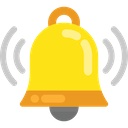T
Tinster
Guest
Guest
Offline
Aweman sent me a website that produces very fine sized
fuel filters. This got me interested and I am doing some research. Here's a bit of technical write up that is interesting since it seems to apply to Triumphs.
<span style="color: #990000">A note on fuel filter selection:
If you have a high-performance fuel system, Marren Fuel Injection recommends that you incorporate fuel filters before and after the fuel pump. A low-restriction (coarse, 100-150 micron) fuel filter should be installed between the fuel tank and the fuel pump inlet to protect the pump from sediment. A fine filter (10 micron) should be installed between the fuel pump and the injectors to ensure that small particles of debris that make it past the fuel pump do not clog the injectors themselves.
Why not just run a fine-element, 10 micron filter before the pump? Fine-element filters will trap a lot more debris than the coarse filters, but they are considerably more restrictive. Because of their high filtration rate, they also become restricted much more quickly. Any restriction on the inlet side of the pump can cause that pump to eventually self-destruct! There are two main reasons for this. Cavitation occurs when the supply of fuel to the pump is restricted, causing small pockets of air or vapor to form in the fuel. These pockets can literally hammer a pump to death. A restriction on the inlet side will also cause vapor lock. The restriction will allow the fuel pump to pull a vacuum on the inlet side, which will drastically lower the boiling point of the fuel. In plain English, the liquid fuel boils inside the fuel line and becomes a vapor. Since the fuel pump can only pump liquid (not vapor), the fuel supply to the engine is cut off. Remember that fuel pumps are cooled and lubricated by liquid fuel (not fuel vapor), and vapor lock can cause fuel pump and engine damage. For this reason, keep a coarse-element filter between the fuel tank and fuel pump, and a fine-element filter between the pump and injectors.
NOTE: Most OEM-style in-tank fuel pumps are equipped with a low-restriction inlet filter, often known as a strainer or “sock” (see photo right). These filters often clip or screw onto the inlet side of the fuel pump. This is considered a coarse-element filter, and if you use an in-tank pump, this is a good low-cost alternative to an external coarse-element filter. However, we recommend that you still use a fine-element filter after the fuel pump to protect the fuel injectors.
</span>
fuel filters. This got me interested and I am doing some research. Here's a bit of technical write up that is interesting since it seems to apply to Triumphs.
<span style="color: #990000">A note on fuel filter selection:
If you have a high-performance fuel system, Marren Fuel Injection recommends that you incorporate fuel filters before and after the fuel pump. A low-restriction (coarse, 100-150 micron) fuel filter should be installed between the fuel tank and the fuel pump inlet to protect the pump from sediment. A fine filter (10 micron) should be installed between the fuel pump and the injectors to ensure that small particles of debris that make it past the fuel pump do not clog the injectors themselves.
Why not just run a fine-element, 10 micron filter before the pump? Fine-element filters will trap a lot more debris than the coarse filters, but they are considerably more restrictive. Because of their high filtration rate, they also become restricted much more quickly. Any restriction on the inlet side of the pump can cause that pump to eventually self-destruct! There are two main reasons for this. Cavitation occurs when the supply of fuel to the pump is restricted, causing small pockets of air or vapor to form in the fuel. These pockets can literally hammer a pump to death. A restriction on the inlet side will also cause vapor lock. The restriction will allow the fuel pump to pull a vacuum on the inlet side, which will drastically lower the boiling point of the fuel. In plain English, the liquid fuel boils inside the fuel line and becomes a vapor. Since the fuel pump can only pump liquid (not vapor), the fuel supply to the engine is cut off. Remember that fuel pumps are cooled and lubricated by liquid fuel (not fuel vapor), and vapor lock can cause fuel pump and engine damage. For this reason, keep a coarse-element filter between the fuel tank and fuel pump, and a fine-element filter between the pump and injectors.
NOTE: Most OEM-style in-tank fuel pumps are equipped with a low-restriction inlet filter, often known as a strainer or “sock” (see photo right). These filters often clip or screw onto the inlet side of the fuel pump. This is considered a coarse-element filter, and if you use an in-tank pump, this is a good low-cost alternative to an external coarse-element filter. However, we recommend that you still use a fine-element filter after the fuel pump to protect the fuel injectors.
</span>

 Hi Guest!
Hi Guest!

 smilie in place of the real @
smilie in place of the real @
 Pretty Please - add it to our Events forum(s) and add to the calendar! >>
Pretty Please - add it to our Events forum(s) and add to the calendar! >> 


